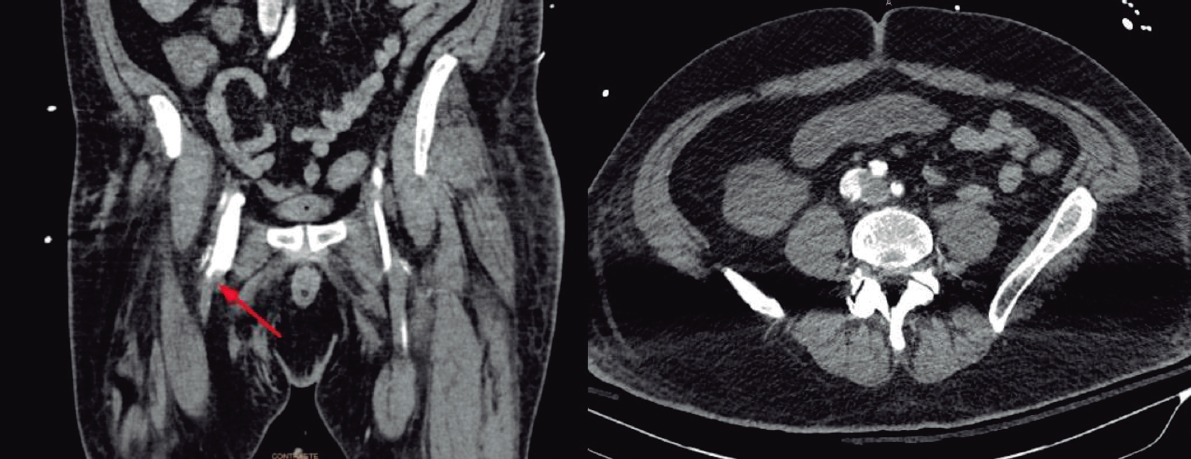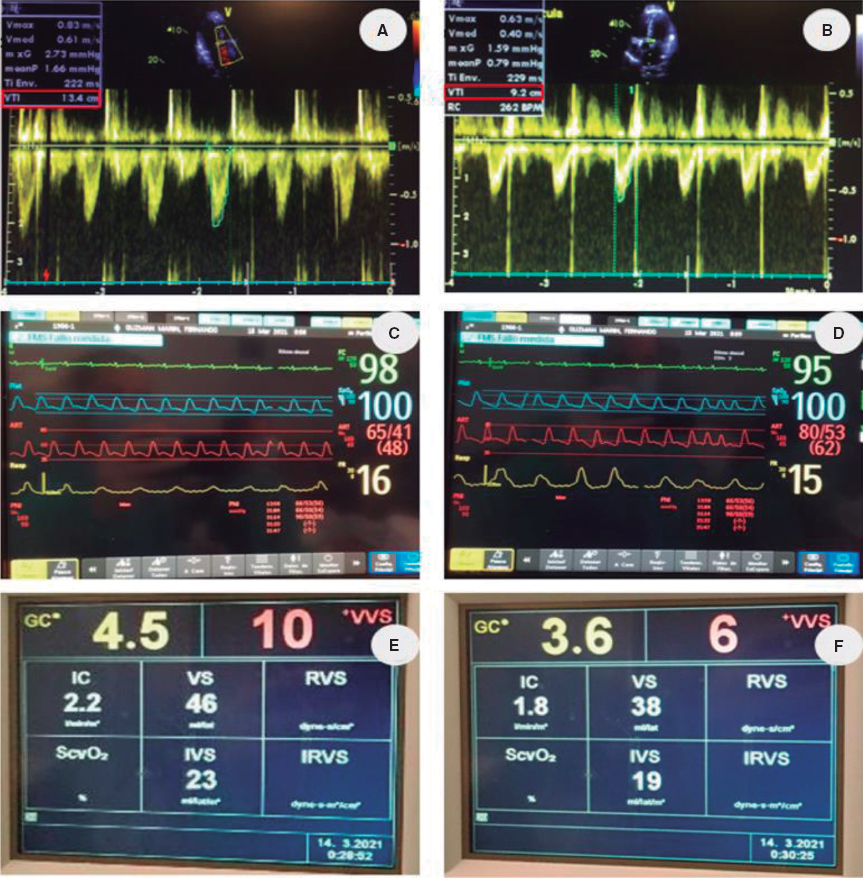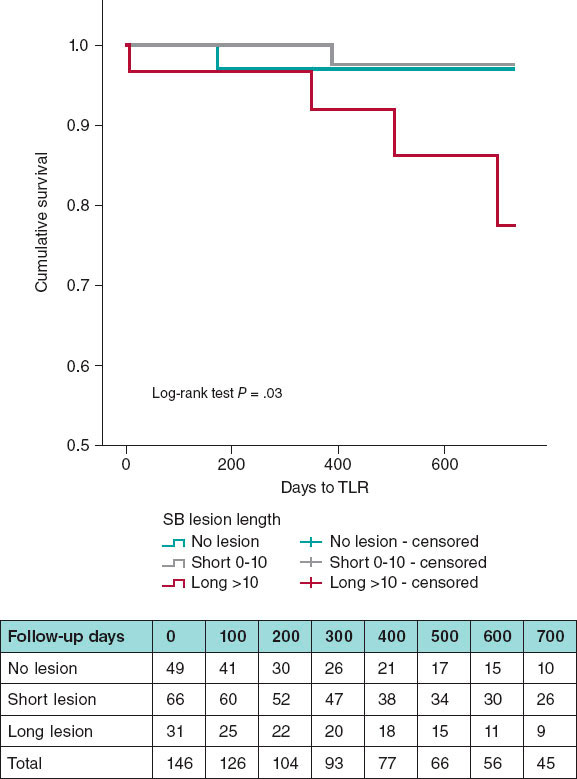| 1 x afterRenderModule mod_custom (Most read) (1.1MB) (46.34%) | 585ms |
| 1 x afterRenderModule mod_custom (Home Superior Izquierda -EN) (4.44MB) (6.62%) | 83.51ms |
| 1 x afterRender (972.06KB) (6.05%) | 76.35ms |
| 1 x afterRenderComponent com_content (134.93KB) (5.13%) | 64.75ms |
| 1 x afterInitialise (3.34MB) (3.72%) | 46.88ms |
| 1 x afterRenderModule mod_custom (Most shared) (403.41KB) (2.86%) | 36.08ms |
| 1 x Before Access::getAssetRules (id:8 name:com_content) (1.11MB) (2.34%) | 29.51ms |
| 1 x afterRenderModule mod_custom (Home Inferior Derecha -EN) (1.53MB) (2.23%) | 28.20ms |
| 1 x afterRenderModule mod_custom (Home Debate Enlaces EN) (1.43MB) (1.99%) | 25.07ms |
| 1 x afterRenderModule mod_custom (Article Herramientas Estadísticas - ENG) (693.3KB) (1.74%) | 21.99ms |
| 1 x beforeRenderRawModule mod_breadcrumbs (Breadcrumbs EN) (1.27MB) (1.55%) | 19.62ms |
| 1 x afterRoute (967.74KB) (1.49%) | 18.83ms |
| 1 x afterRenderModule mod_custom (Header Article -EN) (499.67KB) (1.29%) | 16.28ms |
| 1 x afterRenderModule mod_custom (Home Superior Derecha -EN) (588.95KB) (0.97%) | 12.28ms |
| 1 x afterRenderModule mod_custom (Article Herramientas Traducción - ENG) (255.41KB) (0.72%) | 9.14ms |
| 1 x afterRenderRawModule mod_dms3_refs (Article Herramientas Exportar - ENG) (63.17KB) (0.68%) | 8.60ms |
| 1 x afterRenderModule mod_custom (Separador) (5.82MB) (0.66%) | 8.28ms |
| 1 x afterRenderModule mod_custom (Article Herramientas Descargar - ENG) (118.57KB) (0.6%) | 7.54ms |
| 1 x afterRenderModule mod_custom (Article DOI activo) (256.51KB) (0.6%) | 7.54ms |
| 1 x afterRenderModule mod_custom (Article - Referencia ) (267.37KB) (0.59%) | 7.51ms |
| 1 x afterRenderModule mod_custom (Debate Title) (380.3KB) (0.57%) | 7.22ms |
| 1 x afterRenderModule mod_custom (Article Herramientas Compartir -EN) (296.54KB) (0.56%) | 7.10ms |
| 1 x afterRenderModule mod_custom (Foto Autor) (920.9KB) (0.55%) | 6.93ms |
| 1 x Before Access::getAssetRules (id:1 name:root.1) (309.84KB) (0.52%) | 6.60ms |
| 1 x afterRenderModule mod_custom (Caso clínico 1) (163.52KB) (0.51%) | 6.45ms |
| 1 x afterRenderModule mod_custom (Caso clínico 2) (163.52KB) (0.5%) | 6.32ms |
| 1 x afterRenderModule mod_custom (Article - Comments Section) (112.63KB) (0.47%) | 5.96ms |
| 1 x afterRenderModule mod_custom (Article Category -EN) (211.54KB) (0.46%) | 5.79ms |
| 1 x afterDispatch (365.25KB) (0.46%) | 5.78ms |
| 1 x afterRenderModule mod_custom (Article Authors) (152.07KB) (0.41%) | 5.18ms |
| 1 x afterRenderModule mod_custom (Innovacion Herramientas Compartir -EN) (203.33KB) (0.41%) | 5.17ms |
| 1 x afterRenderModule mod_custom (Article Related contents EN) (167.87KB) (0.41%) | 5.16ms |
| 1 x afterRenderModule mod_custom (Article Herramientas Material Adicional) (169.11KB) (0.4%) | 5.09ms |
| 1 x afterRenderModule mod_custom (Article Translated Title) (148.76KB) (0.39%) | 4.90ms |
| 1 x afterRenderModule mod_custom (Article Subtitulo) (149.98KB) (0.38%) | 4.85ms |
| 1 x afterRenderModule mod_custom (Article Title) (139.38KB) (0.37%) | 4.63ms |
| 1 x afterRenderModule mod_custom (Innovacion Herramientas Traducción EN) (140.4KB) (0.35%) | 4.45ms |
| 1 x afterRenderModule mod_custom (Innovacion Herramientas Estadísticas -EN) (129.22KB) (0.34%) | 4.32ms |
| 1 x afterRenderModule mod_custom (EMAIL Y TWITTER INGLES) (120.23KB) (0.34%) | 4.31ms |
| 1 x afterRenderModule mod_custom (Article Herramientas Imprimir -EN) (119.05KB) (0.34%) | 4.30ms |
| 1 x afterRenderModule mod_custom (Innovacion Herramientas Imprimir -EN) (118.89KB) (0.34%) | 4.29ms |
| 1 x After Access::preloadPermissions (com_content) (965.66KB) (0.3%) | 3.73ms |
| 1 x afterLoad (74.86KB) (0.21%) | 2.67ms |
| 1 x beforeRenderRawModule mod_custom (Publication of Sociedad Española de Cardiología) (3.55KB) (0.14%) | 1.81ms |
| 1 x afterRenderRawModule mod_languages (Language Switcher) (8.3KB) (0.12%) | 1.52ms |
| 1 x beforeRenderRawModule mod_custom (Article Herramientas Descargar - ENG) (6.23KB) (0.11%) | 1.42ms |
| 1 x afterRenderRawModule mod_articles_good_search (Articles Good Search Total (Lateral) (EN)) (33.84KB) (0.11%) | 1.41ms |
| 1 x afterRenderRawModule mod_breadcrumbs (Breadcrumbs EN) (9.38KB) (0.08%) | 1.01ms |
| 1 x beforeRenderRawModule mod_menu (Footer Final EN) (3.03KB) (0.07%) | 888μs |
| 1 x afterRenderRawModule mod_menu (Footer Final EN) (27.91KB) (0.07%) | 849μs |
| 1 x afterRenderRawModule mod_menu (Publish) (20.76KB) (0.07%) | 824μs |
| 1 x afterRenderRawModule mod_menu (About us) (22.11KB) (0.06%) | 809μs |
| 1 x Before Access::preloadComponents (all components) (194.72KB) (0.06%) | 798μs |
| 1 x After Access::preloadComponents (all components) (129.18KB) (0.06%) | 798μs |
| 1 x afterRenderRawModule mod_menu (Content) (18.4KB) (0.06%) | 775μs |
| 1 x beforeRenderRawModule mod_menu (Content) (4.88KB) (0.06%) | 737μs |
| 1 x afterRenderRawModule mod_menu (Sidebar Menú EN) (9.35KB) (0.06%) | 703μs |
| 1 x afterRenderModule mod_custom (Factor de Impacto EN) (5.09KB) (0.05%) | 585μs |
| 1 x afterRenderRawModule mod_menu (Sidebar - REC: Publications) (15.73KB) (0.04%) | 541μs |
| 1 x afterRenderRawModule mod_menu (Permanyer Publications) (10.02KB) (0.04%) | 487μs |
| 1 x beforeRenderRawModule mod_custom (Home Superior Izquierda -EN) (64B) (0.03%) | 415μs |
| 1 x afterRenderModule mod_custom (Home Concurso Hemodinamica EN) (4.48KB) (0.03%) | 406μs |
| 1 x afterRenderRawModule mod_esmedicodisclaimer (esmedicodisclaimer esmedicodisclaimer) (6.49KB) (0.03%) | 390μs |
| 1 x beforeRenderComponent com_content (12.03KB) (0.03%) | 389μs |
| 1 x afterRenderModule mod_custom (Publication of Sociedad Española de Cardiología) (3.31KB) (0.03%) | 378μs |
| 1 x beforeRenderRawModule mod_custom (Article - Comments Section) (528B) (0.03%) | 370μs |
| 1 x afterRenderModule mod_breadcrumbs (Breadcrumbs EN) (4.09KB) (0.03%) | 347μs |
| 1 x afterRenderRawModule mod_custom (Header Article -EN) (3.95KB) (0.03%) | 316μs |
| 1 x beforeRenderRawModule mod_custom (Debate Title) (368B) (0.02%) | 294μs |
| 1 x afterRenderModule mod_articles_good_search (Articles Good Search Total (Lateral) (EN)) (10.48KB) (0.02%) | 280μs |
| 1 x afterRenderRawModule mod_lightbox (Lightbox) (7.66KB) (0.02%) | 279μs |
| 1 x beforeRenderRawModule mod_custom (Home Concurso Hemodinamica EN) (2.44KB) (0.02%) | 264μs |
| 1 x beforeRenderRawModule mod_custom (Header Article -EN) (64B) (0.02%) | 246μs |
| 1 x beforeRenderRawModule mod_custom (Home Superior Derecha -EN) (8.5KB) (0.02%) | 205μs |
| 1 x afterRenderRawModule mod_custom (Article Herramientas Descargar - ENG) (1.08KB) (0.01%) | 174μs |
| 1 x afterRenderModule mod_menu (Content) (3.17KB) (0.01%) | 167μs |
| 1 x afterRenderModule mod_languages (Language Switcher) (3.88KB) (0.01%) | 151μs |
| 1 x afterRenderModule mod_esmedicodisclaimer (esmedicodisclaimer esmedicodisclaimer) (5.39KB) (0.01%) | 151μs |
| 1 x afterRenderRawModule mod_custom (Most shared) (912B) (0.01%) | 148μs |
| 1 x afterRenderModule mod_dms3_refs (Article Herramientas Exportar - ENG) (3.02KB) (0.01%) | 146μs |
| 1 x afterRenderModule mod_lightbox (Lightbox) (4.36KB) (0.01%) | 145μs |
| 1 x afterRenderRawModule mod_custom (Article Herramientas Traducción - ENG) (1.05KB) (0.01%) | 142μs |
| 1 x beforeRenderRawModule mod_languages (Language Switcher) (6.92KB) (0.01%) | 141μs |
| 1 x beforeRenderRawModule mod_menu (Publish) (1.38KB) (0.01%) | 141μs |
| 1 x afterRenderModule mod_menu (Footer Final EN) (3.55KB) (0.01%) | 141μs |
| 1 x afterRenderModule mod_menu (About us) (3.28KB) (0.01%) | 139μs |
| 1 x afterRenderModule mod_custom (Article - Disponible Online -EN) (2.64KB) (0.01%) | 135μs |
| 1 x afterRenderRawModule mod_custom (Publication of Sociedad Española de Cardiología) (1.09KB) (0.01%) | 132μs |
| 1 x afterRenderModule mod_menu (Publish) (3.42KB) (0.01%) | 132μs |
| 1 x beforeRenderRawModule mod_menu (About us) (400B) (0.01%) | 131μs |
| 1 x beforeRenderRawModule mod_lightbox (Lightbox) (6.44KB) (0.01%) | 131μs |
| 1 x afterRenderModule mod_menu (Sidebar Menú EN) (2.92KB) (0.01%) | 130μs |
| 1 x beforeRenderRawModule mod_menu (Permanyer Publications) (272B) (0.01%) | 128μs |
| 1 x afterRenderModule mod_menu (Permanyer Publications) (3.11KB) (0.01%) | 127μs |
| 1 x afterRenderModule mod_menu (Sidebar - REC: Publications) (3.45KB) (0.01%) | 123μs |
| 1 x afterRenderRawModule mod_custom (Separador) (1.02KB) (0.01%) | 116μs |
| 1 x After Access::getAssetRules (id:592 name:com_content.article.1203) (8.3KB) (0.01%) | 103μs |
| 1 x afterRenderRawModule mod_custom (Article DOI activo) (1.02KB) (0.01%) | 101μs |
| 1 x afterRenderRawModule mod_custom (Home Superior Derecha -EN) (928B) (0.01%) | 94μs |
| 1 x afterRenderRawModule mod_custom (Home Debate Enlaces EN) (928B) (0.01%) | 94μs |
| 1 x afterRenderRawModule mod_custom (Debate Title) (976B) (0.01%) | 92μs |
| 1 x afterRenderRawModule mod_custom (Home Inferior Derecha -EN) (928B) (0.01%) | 92μs |
| 1 x afterRenderRawModule mod_custom (Article - Comments Section) (928B) (0.01%) | 89μs |
| 1 x afterRenderRawModule mod_custom (Home Superior Izquierda -EN) (928B) (0.01%) | 89μs |
| 1 x afterRenderRawModule mod_custom (Factor de Impacto EN) (912B) (0.01%) | 89μs |
| 1 x afterRenderRawModule mod_custom (Innovacion Herramientas Traducción EN) (1.05KB) (0.01%) | 89μs |
| 1 x afterRenderRawModule mod_custom (Caso clínico 2) (1.14KB) (0.01%) | 88μs |
| 1 x afterRenderRawModule mod_custom (Innovacion Herramientas Imprimir -EN) (992B) (0.01%) | 87μs |
| 1 x afterRenderRawModule mod_custom (EMAIL Y TWITTER INGLES) (1.03KB) (0.01%) | 87μs |
| 1 x afterRenderRawModule mod_custom (Innovacion Herramientas Compartir -EN) (928B) (0.01%) | 87μs |
| 1 x afterRenderRawModule mod_custom (Article Herramientas Estadísticas - ENG) (944B) (0.01%) | 87μs |
| 1 x afterRenderRawModule mod_custom (Article Title) (976B) (0.01%) | 86μs |
| 1 x afterRenderRawModule mod_custom (Innovacion Herramientas Estadísticas -EN) (944B) (0.01%) | 86μs |
| 1 x afterRenderRawModule mod_custom (Article Subtitulo) (976B) (0.01%) | 86μs |
| 1 x afterRenderRawModule mod_custom (Article - Referencia ) (1.02KB) (0.01%) | 85μs |
| 1 x afterRenderRawModule mod_custom (Foto Autor) (1.02KB) (0.01%) | 85μs |
| 1 x afterRenderRawModule mod_custom (Article Related contents EN) (3.53KB) (0.01%) | 85μs |
| 1 x afterRenderRawModule mod_custom (Caso clínico 1) (1.14KB) (0.01%) | 85μs |
| 1 x afterRenderRawModule mod_custom (Home Concurso Hemodinamica EN) (928B) (0.01%) | 85μs |
| 1 x afterRenderRawModule mod_custom (Article Herramientas Imprimir -EN) (928B) (0.01%) | 85μs |
| 1 x afterRenderRawModule mod_custom (Article - Disponible Online -EN) (2.22KB) (0.01%) | 84μs |
| 1 x afterRenderRawModule mod_custom (Article Authors) (976B) (0.01%) | 84μs |
| 1 x afterRenderRawModule mod_custom (Article Herramientas Compartir -EN) (928B) (0.01%) | 83μs |
| 1 x afterRenderRawModule mod_custom (Article Herramientas Material Adicional) (944B) (0.01%) | 83μs |
| 1 x afterRenderRawModule mod_custom (Article Translated Title) (992B) (0.01%) | 81μs |
| 1 x afterRenderRawModule mod_custom (Most read) (11.89KB) (0.01%) | 79μs |
| 1 x afterRenderRawModule mod_custom (Article Category -EN) (1.02KB) (0.01%) | 76μs |
| 1 x beforeRenderRawModule mod_custom (Most shared) (2.13KB) (0%) | 53μs |
| 1 x beforeRenderRawModule mod_custom (Article DOI activo) (1.22KB) (0%) | 50μs |
| 1 x beforeRenderRawModule mod_custom (Article Herramientas Traducción - ENG) (1.22KB) (0%) | 47μs |
| 1 x Before Access::getAssetRules (id:592 name:com_content.article.1203) (34.65KB) (0%) | 44μs |
| 1 x beforeRenderRawModule mod_articles_good_search (Articles Good Search Total (Lateral) (EN)) (9.75KB) (0%) | 39μs |
| 1 x beforeRenderRawModule mod_custom (Innovacion Herramientas Traducción EN) (1.97KB) (0%) | 35μs |
| 1 x beforeRenderRawModule mod_custom (Home Inferior Derecha -EN) (4.86KB) (0%) | 34μs |
| 1 x beforeRenderRawModule mod_custom (Home Debate Enlaces EN) (4.86KB) (0%) | 31μs |
| 1 x beforeRenderRawModule mod_custom (Separador) (1.75KB) (0%) | 31μs |
| 1 x beforeRenderRawModule mod_custom (Innovacion Herramientas Compartir -EN) (1.09KB) (0%) | 31μs |
| 1 x beforeRenderRawModule mod_custom (Innovacion Herramientas Estadísticas -EN) (9.47KB) (0%) | 31μs |
| 1 x beforeRenderRawModule mod_custom (Caso clínico 2) (2.72KB) (0%) | 30μs |
| 1 x beforeRenderRawModule mod_custom (Innovacion Herramientas Imprimir -EN) (1.36KB) (0%) | 30μs |
| 1 x beforeRenderRawModule mod_dms3_refs (Article Herramientas Exportar - ENG) (2.66KB) (0%) | 30μs |
| 1 x beforeRenderRawModule mod_custom (EMAIL Y TWITTER INGLES) (1.64KB) (0%) | 29μs |
| 1 x beforeRenderRawModule mod_custom (Article Subtitulo) (1.38KB) (0%) | 28μs |
| 1 x beforeRenderRawModule mod_custom (Article Herramientas Imprimir -EN) (1.39KB) (0%) | 28μs |
| 1 x beforeRenderRawModule mod_custom (Foto Autor) (1.69KB) (0%) | 28μs |
| 1 x beforeRenderRawModule mod_custom (Article Title) (1.44KB) (0%) | 28μs |
| 1 x beforeRenderRawModule mod_custom (Factor de Impacto EN) (13.11KB) (0%) | 28μs |
| 1 x beforeRenderRawModule mod_custom (Article Authors) (1.44KB) (0%) | 27μs |
| 1 x beforeRenderRawModule mod_custom (Article - Referencia ) (1.61KB) (0%) | 27μs |
| 1 x beforeRenderRawModule mod_custom (Article Related contents EN) (1.11KB) (0%) | 27μs |
| 1 x beforeRenderRawModule mod_custom (Article Herramientas Compartir -EN) (176B) (0%) | 27μs |
| 1 x beforeRenderRawModule mod_custom (Article Herramientas Material Adicional) (9KB) (0%) | 27μs |
| 1 x beforeRenderRawModule mod_custom (Article - Disponible Online -EN) (1.98KB) (0%) | 26μs |
| 1 x beforeRenderRawModule mod_custom (Caso clínico 1) (2KB) (0%) | 25μs |
| 1 x beforeRenderRawModule mod_custom (Article Translated Title) (1.61KB) (0%) | 24μs |
| 1 x beforeRenderRawModule mod_custom (Article Herramientas Estadísticas - ENG) (2.25KB) (0%) | 24μs |
| 1 x beforeRenderRawModule mod_menu (Sidebar Menú EN) (NANB) (0%) | 23μs |
| 1 x beforeRenderRawModule mod_esmedicodisclaimer (esmedicodisclaimer esmedicodisclaimer) (2.23KB) (0%) | 22μs |
| 1 x beforeRenderRawModule mod_menu (Sidebar - REC: Publications) (880B) (0%) | 21μs |
| 1 x After Access::getAssetRules (id:1 name:root.1) (6.48KB) (0%) | 20μs |
| 1 x beforeRenderRawModule mod_custom (Most read) (2.64KB) (0%) | 19μs |
| 1 x beforeRenderRawModule mod_custom (Article Category -EN) (800B) (0%) | 17μs |
| 1 x Before Access::preloadPermissions (com_content) (1.79KB) (0%) | 11μs |
| 1 x After Access::getAssetRules (id:8 name:com_content) (1.28KB) (0%) | 10μs |
| 1 x beforeRenderModule mod_custom (Article Translated Title) (736B) (0%) | 9μs |
| 1 x beforeRenderModule mod_dms3_refs (Article Herramientas Exportar - ENG) (736B) (0%) | 6μs |
| 1 x beforeRenderModule mod_breadcrumbs (Breadcrumbs EN) (704B) (0%) | 5μs |
| 1 x beforeRenderModule mod_custom (Most shared) (720B) (0%) | 5μs |
| 1 x beforeRenderModule mod_custom (Article Herramientas Descargar - ENG) (736B) (0%) | 5μs |
| 1 x beforeRenderModule mod_custom (Article Herramientas Traducción - ENG) (736B) (0%) | 5μs |
| 1 x beforeRenderModule mod_menu (About us) (704B) (0%) | 5μs |
| 1 x beforeRenderModule mod_custom (Header Article -EN) (720B) (0%) | 4μs |
| 1 x beforeRenderModule mod_custom (Article - Comments Section) (736B) (0%) | 4μs |
| 1 x beforeRenderModule mod_custom (Home Superior Derecha -EN) (736B) (0%) | 4μs |
| 1 x beforeRenderModule mod_languages (Language Switcher) (704B) (0%) | 4μs |
| 1 x beforeRenderModule mod_articles_good_search (Articles Good Search Total (Lateral) (EN)) (752B) (0%) | 4μs |
| 1 x beforeRenderModule mod_menu (Sidebar Menú EN) (720B) (0%) | 4μs |
| 1 x beforeRenderModule mod_menu (Content) (704B) (0%) | 4μs |
| 1 x beforeRenderModule mod_menu (Publish) (704B) (0%) | 4μs |
| 1 x beforeRenderModule mod_menu (Permanyer Publications) (720B) (0%) | 4μs |
| 1 x beforeRenderModule mod_menu (Footer Final EN) (720B) (0%) | 4μs |
| 1 x beforeRenderModule mod_custom (Article DOI activo) (720B) (0%) | 3μs |
| 1 x beforeRenderModule mod_custom (Foto Autor) (720B) (0%) | 3μs |
| 1 x beforeRenderModule mod_custom (Article Subtitulo) (720B) (0%) | 3μs |
| 1 x beforeRenderModule mod_custom (Article Authors) (720B) (0%) | 3μs |
| 1 x beforeRenderModule mod_custom (Caso clínico 1) (720B) (0%) | 3μs |
| 1 x beforeRenderModule mod_custom (Caso clínico 2) (720B) (0%) | 3μs |
| 1 x beforeRenderModule mod_custom (Home Superior Izquierda -EN) (736B) (0%) | 3μs |
| 1 x beforeRenderModule mod_custom (Home Debate Enlaces EN) (720B) (0%) | 3μs |
| 1 x beforeRenderModule mod_custom (Home Inferior Derecha -EN) (736B) (0%) | 3μs |
| 1 x beforeRenderModule mod_custom (Publication of Sociedad Española de Cardiología) (752B) (0%) | 3μs |
| 1 x beforeRenderModule mod_custom (Factor de Impacto EN) (720B) (0%) | 3μs |
| 1 x beforeRenderModule mod_custom (Home Concurso Hemodinamica EN) (736B) (0%) | 3μs |
| 1 x beforeRenderModule mod_menu (Sidebar - REC: Publications) (736B) (0%) | 3μs |
| 1 x beforeRenderModule mod_custom (Article Herramientas Imprimir -EN) (736B) (0%) | 3μs |
| 1 x beforeRenderModule mod_custom (Separador) (720B) (0%) | 3μs |
| 1 x beforeRenderModule mod_custom (Article Herramientas Material Adicional) (736B) (0%) | 3μs |
| 1 x beforeRenderModule mod_esmedicodisclaimer (esmedicodisclaimer esmedicodisclaimer) (752B) (0%) | 3μs |
| 1 x beforeRenderModule mod_custom (Debate Title) (720B) (0%) | 3μs |
| 1 x beforeRenderModule mod_custom (Article - Disponible Online -EN) (736B) (0%) | 3μs |
| 1 x beforeRenderModule mod_custom (Article - Referencia ) (720B) (0%) | 3μs |
| 1 x beforeRenderModule mod_lightbox (Lightbox) (720B) (0%) | 3μs |
| 1 x beforeRenderModule mod_custom (Most read) (720B) (0%) | 3μs |
| 1 x beforeRenderModule mod_custom (Innovacion Herramientas Imprimir -EN) (736B) (0%) | 3μs |
| 1 x beforeRenderModule mod_custom (EMAIL Y TWITTER INGLES) (720B) (0%) | 3μs |
| 1 x beforeRenderModule mod_custom (Article Herramientas Estadísticas - ENG) (752B) (0%) | 3μs |
| 1 x beforeRenderModule mod_custom (Innovacion Herramientas Estadísticas -EN) (752B) (0%) | 3μs |
| 1 x beforeRenderModule mod_custom (Article Category -EN) (720B) (0%) | 2μs |
| 1 x beforeRenderModule mod_custom (Innovacion Herramientas Traducción EN) (736B) (0%) | 2μs |
| 1 x beforeRenderModule mod_custom (Article Herramientas Compartir -EN) (736B) (0%) | 2μs |
| 1 x beforeRenderModule mod_custom (Article Title) (720B) (0%) | 2μs |
| 1 x beforeRenderModule mod_custom (Article Related contents EN) (736B) (0%) | 2μs |
| 1 x beforeRenderModule mod_custom (Innovacion Herramientas Compartir -EN) (736B) (0%) | 2μs |













